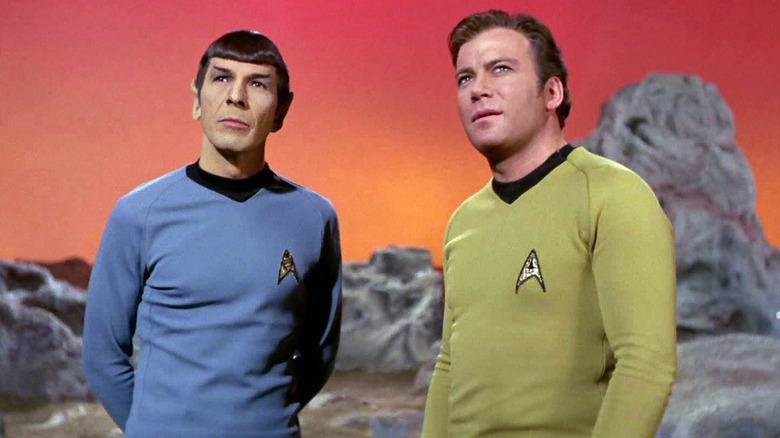
As a media phenomenon, "Star Trek" began on September 8, 1966 with the airing of "The Man Trap" (the sixth episode in production order, but the first aired). Originally, the show's writers, including creator Gene Roddenberry, used the concept of "stardates" to ensure the show's actual timeline was left vague; for several episodes, all audiences knew was that "Trek" was set in the future and that the future was a pretty keen place. It wouldn't be until the episode "The Naked Time" (seventh episode produced, fourth aired, first aired on September 29, 1966) that the Gregorian year would be mentioned out loud, and an actual timeline could begin to be constructed.
Since then, "Star Trek" has extrapolated an extensive, centuries long timeline of events, often skipping merrily back and forth through the centuries, adding more and more to the franchises complex chronology. The chronology of "Star Trek" is so complicated that entire books have been published tracking the various shows' and films' events. Because of the constant production of new "Star Trek," these books became dated immediately.
"Star Trek: Strange New Worlds" is set to debut on Paramount+ on May 5, and it is set immediately before the events of the original "Star Trek," making it the third "prequel" series to the original. To keep matters as clear as possible, here is a (very brief, by the standards of "Trek") rundown of "Star Trek" chronology from within its own canon.
NOTE: This list will not necessarily include single episodes wherein characters go back in time, but give an overall timeframe for each individual film and TV show.
1986: Star Trek IV: The Voyage Home
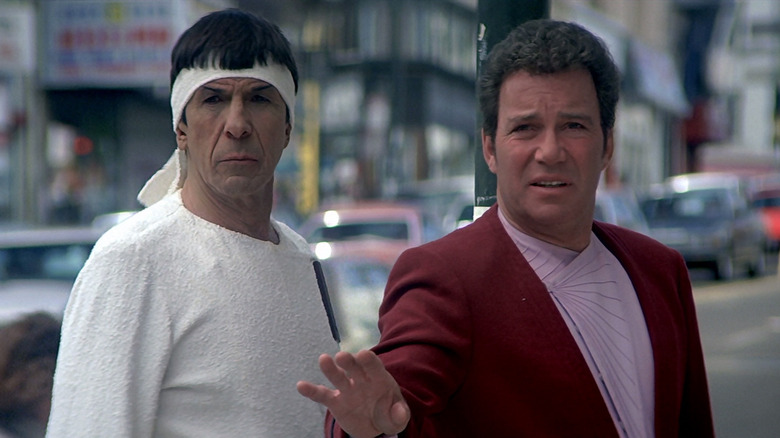
Although beginning and ending within the proper chronology of the "Star Trek" future, Leonard Nimoy's 1986 feature film "Star Trek IV: The Voyage Home" is set largely in the earliest point in the franchise's timeline (again, excluding single time travel episodes of any given TV series, wherein Mark Twain, the 1950s, and other eras are regularly visited). In the film, the crew of the Enterprise must go back in time to rescue a pair of humpback whales from extinction in order to appease an enormous, inscrutable space monolith that has been draining future Earth of its oceans, looking for its own kind.
The bulk of "Voyage Home" takes place in 1986, and the film gained a lot of critical and audience attention for its fish-out-of-water humor and light tone; the previous three films had been comparatively dour, downbeat, or cerebral.
2024: Star Trek: Picard (Season 2)
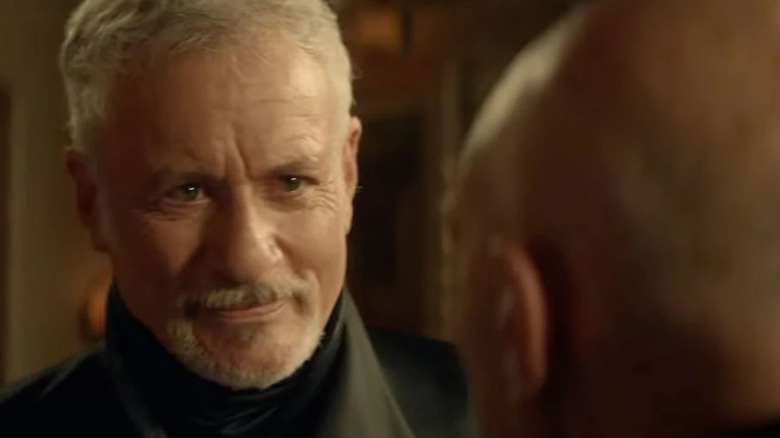
As of this writing, the second season of "Star Trek: Picard" is still being released weekly on Paramount+, so the ultimate conclusion of the story is as yet unknown.
What is known is that the trickster god Q (John De Lancie), a playful villain from "Star Trek: The Next Generation," visited an elderly Jean-Luc Picard (Patrick Stewart) to warn him of a parallel universe. In this parallel universe, Earth is a genocidal conqueror race that has wiped out most life in the galaxy. Picard must travel back in time, paralleling the story of "Voyage Home" in order to stop the fascist timeline from starting. Thanks to the limited information they have, they travel to the year 2024, and the bulk of the season's action takes place there.
A bit of a continuity error already: In previously mentioned "Trek" canon, the Eugenics Wars -- the conflagration that wrought Khan from "Star Trek II" -- should have already happened by 2024 (I believe the original date for the Eugenics Wars was 1997), but, in "Picard," they had clearly been delayed. One of the subplots of the second season of "Picard,' however, involves a malevolent genetic engineer, so it looks like the Eugenics Wars may finally be nigh.
2063: Star Trek: First Contact
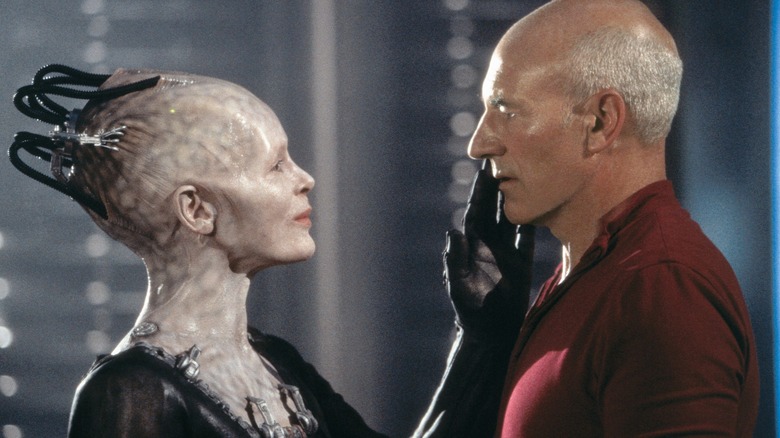
Although never directly filmed, there are constant references throughout "Star Trek" to World War III, an event that left the entire planet devastated. Despite destitution and technological ruin, an inventor named Zefram Cochran managed to invent an engine that allowed humanity to travel faster than light. This technology, when being tested for the first time in the solar system, attracted the attention of some Vulcans who just happened to be passing by. This was the First Contact mentioned in the title of the 1996 film "Star Trek: First Contact."
In that film, the characters from "Star Trek: The Next Generation" travel back in time to foil a plot by a malevolent species of cyborgs called The Borg, and find themselves in the year A.D. 2063 where they could witness First Contact themselves. This was the event that essentially kicked off creator Gene Roddenberry's vision of a peaceful future. In meeting intelligent space aliens, a hobbled humanity learned that war was churlish, and that unity as a species was preferable in the face of a suddenly occupied cosmos.
"First Contact" is essentially the "Star Trek" origin story.
2151 - 2155: Star Trek: Enterprise
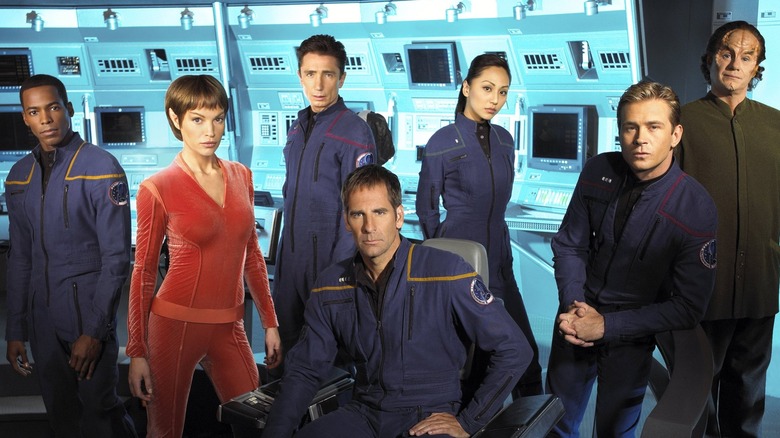
After first talking to Vulcans, humans were eager to take to the stars and join the galactic community. The conceit of the 2001 TV series "Star Trek: Enterprise" (originally just called "Enterprise") was that the Vulcans, seeing how illogical and roughhewn humanity still was, encouraged them to stay on Earth for nearly a century before actually taking to the stars. In that century, humanity rebuilt, formed a Starfleet, and constructed its very first long-mission starship, the U.S.S. Enterprise NX-01. The show is about the adventures of the very first humans in space, circa A.D. 2151.
"Enterprise" took place before a lot of established "Trek" tech had been invented. There were transporters, but they weren't entirely safe for use on humans. There were no shields around the ship. There were no food replicators, and the Enterprise required a galley. Most notably, there wasn't a Prime Directive yet, so a lot of mistakes are bound to be made. It wouldn't be until 2161 -- according to ancillary revelations -- that the Federation would be formed.
2254: The Cage
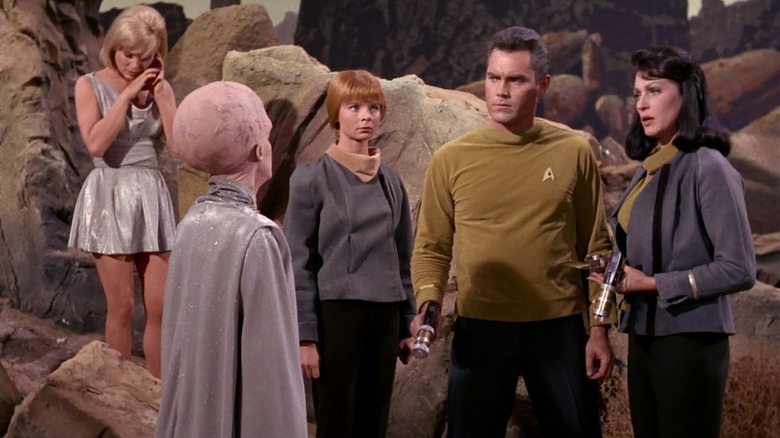
The unused "Star Trek" pilot has probably gained more canonical traction than any other unused footage from any other work of filmed fiction. "The Cage" didn't air in its complete form until 1986, 20 years after its making. Previously, footage from "The Cage" was incorporated into a two-part "Star Trek" episode called "The Menagerie" (November of 1966).
In the pilot, we first meet Capt. Christopher Pike (Jeffrey Hunter) and his ship the U.S.S. Enterprise NCC-1701. We were first introduced to Spock as well, although Spock would be the only character carried over into the second pilot that was eventually used. Majel Barrett played the Enterprise's first officer in "The Cage," and she would go on to play multiple other roles throughout "Star Trek," including Nurse Chapel, M'Ress, Lwaxana Troi, and the voice of the ship's computer.
The events of "The Cage" would also be revisited in the second season of "Star Trek: Discovery."
2256 - 2258: Star Trek: Discovery (Seasons 1 And 2)
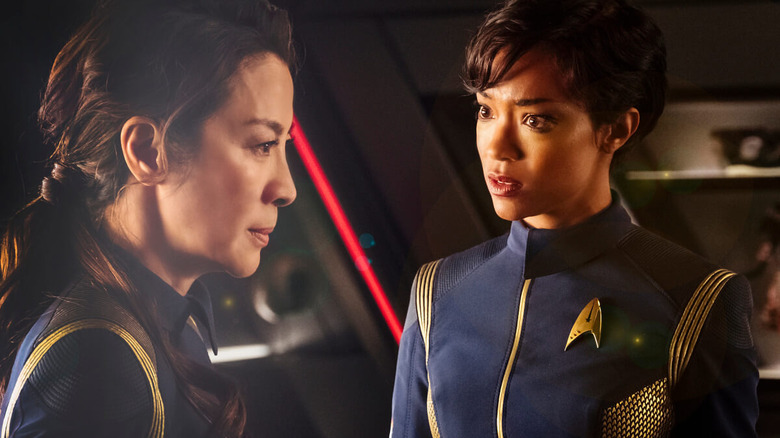
Another cataclysm that had been mentioned multiple times throughout "Star Trek" was a war between the Klingons and the Federation. The first season of "Star Trek: Discovery," which debuted on CBS All Access (now Paramount+) in November of 2017, dramatized those events explicitly, as seen through the eyes of the U.S.S. Discovery. This new ship was a science vessel that had figured out a way to tap into a galaxy-wide network of near-undetectable, microscopic spores into order to teleport anywhere in the galaxy instantaneously.
After surviving the Klingon war, the Discovery teamed up with the U.S.S. Enterprise while it was still being captained by Christopher Pike (now played by Anson Mount), putting the events of "Discovery" immediately after the original pilot. There were a lot -- and I mean a LOT -- of narrative excuses as to why the high-tech Discovery (realized with late-2010s special effects) didn't match the boxier, monochromatic world of "The Cage."
The show's writers also needed to come up with an organic reason why a ship that can teleport -- a technology that would have fundamentally changed the world of "Star Trek" -- was never mentioned in any of the "Trek" shows made from 1966 until 2017. As such, at the end of the second season of "Discovery," the ship was thrown almost 1,000 years into the future in order to outrun an insidious computer intelligence that would spread throughout the galaxy if knowledge of it was passed around. As such, the Discovery more or less deleted itself from existence. As panicked, narrative ass-saving measures go, it's a 7.
2258: Star Trek: Strange New Worlds
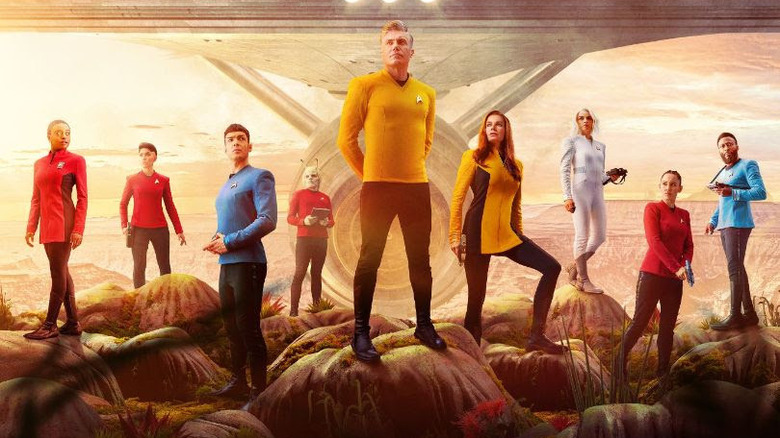
The appearance of Capt. Pike on "Discovery" was so well-received that Paramount+ elected to go back to the Enterprise, bring back the characters from "The Cage," lump in a few familiar faces from the 1966 "Star Trek," and make "Strange New Worlds," a series that takes place only eight years prior to the events of the original TV series.
"Strange New Worlds" brings back Anson Mount as Pike, as well as a young Spock, a very young Uhura, a young Nurse Chapel, one of Khan's ancestors, and Dr. M'Benga, who showed up in a few episodes if the 1966 show. It also, notably, will not have season-long story arcs, but a single-hour episodic structure, standing in contrast with most of the other Paramount+-era "Star Treks," with "Lower Decks" being the proud exception.
2258 (KELVIN): Star Trek (2009)
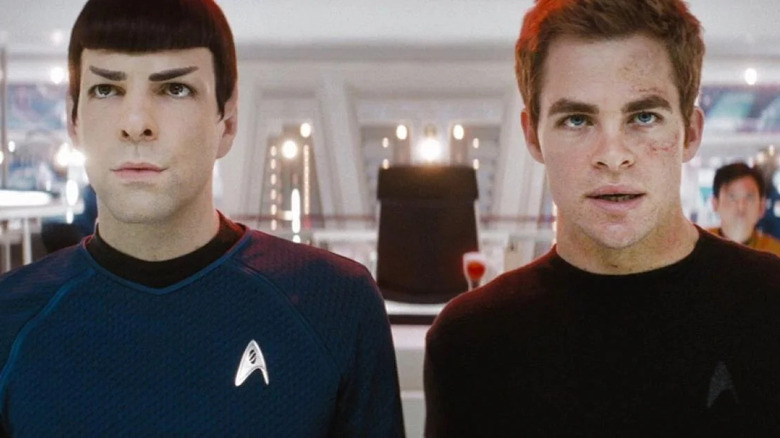
Thanks to "Star Trek," the notion of parallel universes is quite well-known to the public. Incidentally, it's been quite odd watching the films and TV shows in the Marvel universe slow-walk the notion of a multiverse over the course of multiple installments when we've already seen Spock with a goatee.
Thanks to complicated studio politics, there was a split in Paramount in the mid-2000s, and the Paramount side of the schism -- when wanting to make a new "Star Trek" feature film -- was legally required to make something distinguishable from the TV shows. Enter J.J. Abrams and his 2009 feature film "Star Trek" which takes place at the same time as "Strange New Worlds," but in a parallel universe where the characters from the 1966 show now look like a new cast, the Enterprise looks brighter and sleeker, and everything is more intense and action-packed.
This new timeline would be created when a villain went back in time interfered with James T. Kirk right when he was born.
2259 (KELVIN): Star Trek Into Darkness
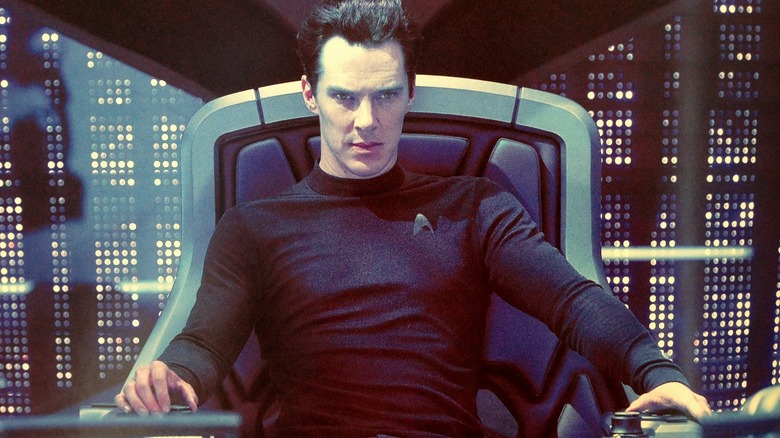
Although taking place far before the events of 1982's "Star Trek II: The Wrath of Khan," J.J. Abrams' "Star Trek Into Darkness" (2013) drew a lot of story parallels to the Nicholas Meyer film. Taking place almost immediately after the 2009 film, "Into Darkness" involved the character of Khan who, in the timeline of the 1966 series, wouldn't be resurrected from cryogenic sleep for a few years hence. In "Into Darkness," he was awakened early, became involved in a plot to smuggle other cryogenically frozen compatriots.
Originally, the Eugenics Wars were meant to have started in the 1990s, but -- as "Star Trek" persisted, and the '90s came and went in the real world -- that timeline had to be altered several times. The timeline of the Eugenics Wars in "Into Darkness" are a little unclear. As we saw above in "Star Trek: Picard," we know that they'll now take place sometime after 2024.
2263 (KELVIN): Star Trek Beyond
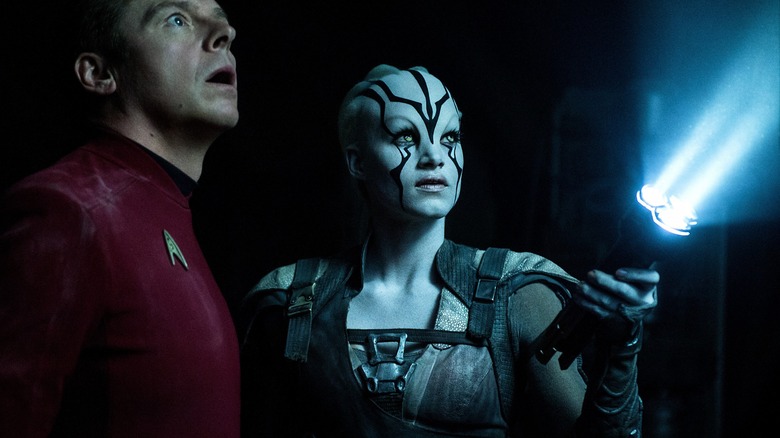
In Justin Lin's "Star Trek Beyond" (2016), Kirk (Chris Pine) laments that his adventures have already become episodic. It's unusual that the 2009 film and the 2013 sequel are essentially origin stories about the young Kirk coming into his own, and "Beyond" skips ahead to the point where he's already tired of being on "Star Trek." We missed the actual "five year mission" part!
Another interesting wrinkle in "Beyond" is that it alludes to a time somewhere after "Star Trek: Enterprise": The evil Kroll (Idris Elba) was, in fact, a human captain named Edison who led his own starship in the "Enterprise" era. Before the film, he was mutated into an evil alien. "Beyond," in explicitly mentioning the Xindi wars and other events from "Enterprise," anchors the Kelvin films a little more solidly into the "Trek" timeline.
2265 - 2269: Star Trek
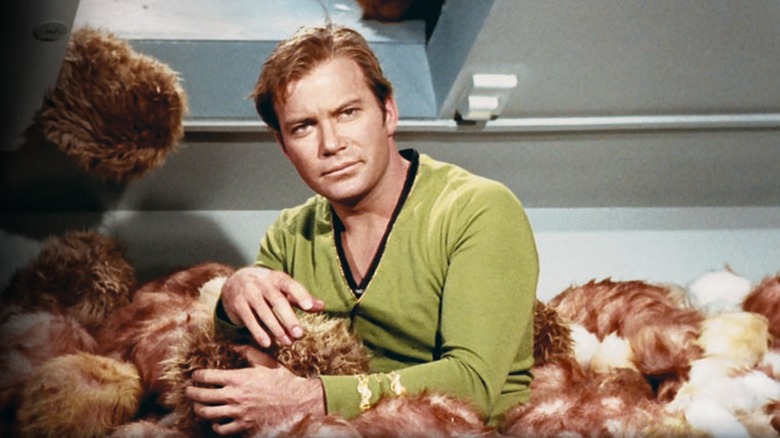
After "The Cage" was abandoned by Paramount, the studio and Gene Roddenberry reworked the show into the 1966 program we all know and love. As mentioned, Spock was the only character carried over from the original pilot, and "Star Trek" now featured William Shatner as Captain Kirk and a host of new characters besides. "Star Trek" began as a horror show -- there are many monsters and scare moments in the first season -- eventually tackling ethical issues in a sci-fi fantasy context.
"Star Trek" ran for three seasons, ending its initial run on June 3, 1969. Thanks to the gods of syndication, "Star Trek" would remain in reruns for the following decade, building up interest, spawning Trek conventions, and allowing the show to grow into a full-blown cultural phenomenon.
2269 - 2270: Star Trek: The Animated Series
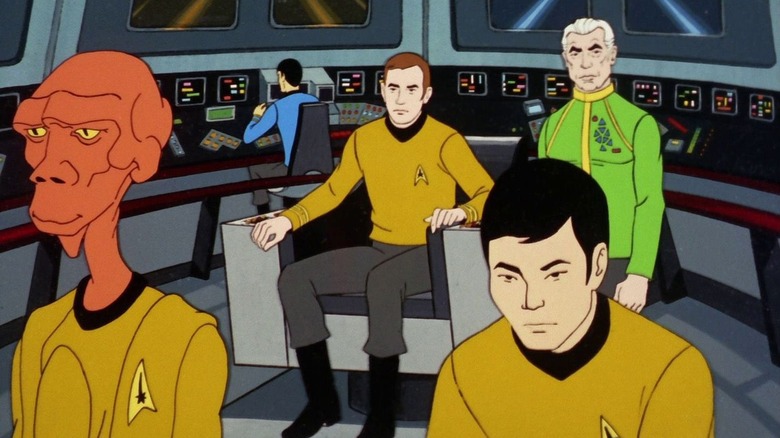
In the opening credits of "Star Trek," Shatner brazenly informed the audiences that the U.S.S. Enterprise was on a five-year mission. Given that the show was canned after only three years, there was more mission left to witness. In 1973, Roddenberry teamed up with Filmation to make an animated "Star Trek" series that would, by dint of its two seasons, ostensibly complete the five-year mission. Chekov (Walter Koenig) was absent from this show, but other unusual aliens took his place, including a cat woman named M'Ress and Mr. Aryx, a being with three arms. The animated format allowed for wilder ideas, aliens, and ships to be employed, and there are stories featuring flying serpents, aliens made of plants, an undersea episode, and a story with a 50-foot Spock.
This 1973 version of "Star Trek," in only running 30 minutes per episode, cut out a lot of extraneous character moments from the traditional "Trek" structure, and got straight to the story. It's a far more efficient show than the 1966 program, and it has a passionate following of fans.
2273: Star Trek: The Motion Picture
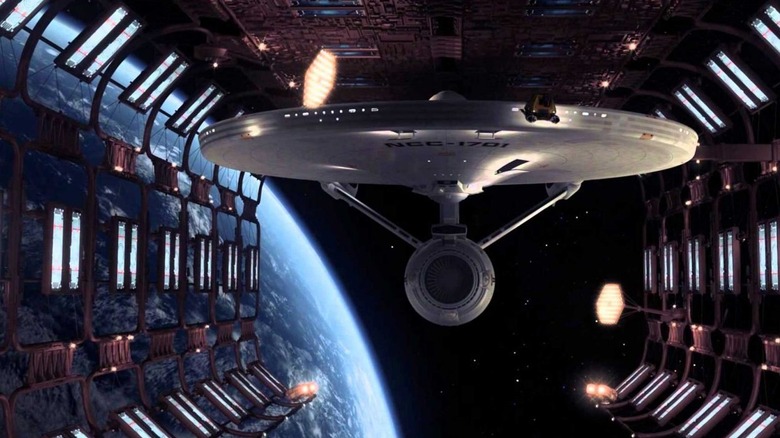
The decade of syndication, "Trek" conventions, and the financial success of George Lucas' sci-fi serial epic "Star Wars" in 1977 led Paramount to start thinking about restarting "Star Trek" on TV. A project was put into production that was to be called "Star Trek Phase II," and would have reunited several familiar "Trek" characters as well as introduce some new ones. For various reasons, "Phase II" was abandoned and elements of it were transformed into what would become the 1979 theatrical release "Star Trek: The Motion Picture."
If all you had prior to "The Motion Picture" was a failed, low-budget TV show and a little-regarded animated series, this movie would feel grand in ways that you couldn't previously imagine. A lot of time was devoted to the size of the Enterprise, the importance of the characters, and mind-bending notions about the unending vastness of the cosmos. Here was a "Star Trek" film that is often compared to 1968's "2001: A Space Odyssey." Good gracious was it enormous.
"The Motion Picture" was successful enough to warrant a sequel, but not so successful that Roddenberry was welcomed back. Remember that detail when we get to "Star Trek: The Next Generation."
2285: Star Trek II: The Wrath Of Khan And Star Trek III: The Search For Spock
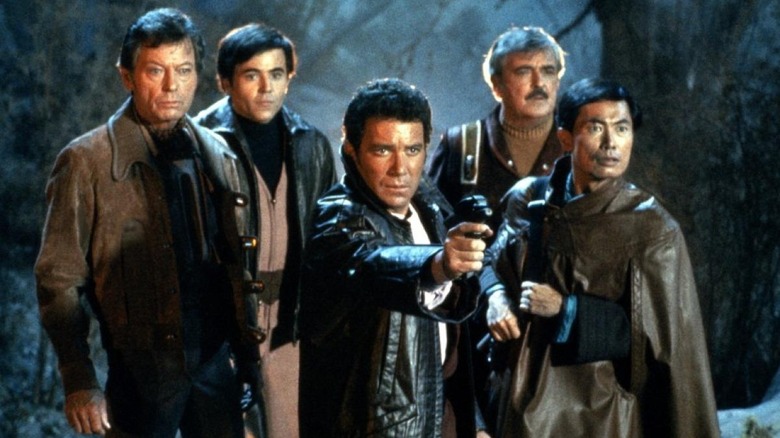
2285 was a significant year. In the events of Nicholas Meyer's "Star Trek II: The Wrath of Khan" (1982), a thawed out Khan -- the version played by Ricardo Montalbán from the 1967 "Star Trek" episode "The Space Seed," not the version played by Benedict Cumberbatch in "Star Trek Into Darkness" -- hijacked a starship called the U.S.S. Reliant and set out on a mission of revenge against Admiral Kirk. The good admiral, we find, had forgotten about a lot of irresponsible actions taken in his past and had to face them head on just as he was looking down the barrel of old age. "Star Trek II" didn't end well for Kirk or for Spock. In that film, Spock famously dies.
Not wasting any time, however, Kirk and co. sprang back into action in Leonard Nimoy's "Star Trek III: The Search for Spock" (1984), which picks up immediately after "Khan" ended. Thanks to the fineries of Vulcan psychic powers, and a high tech radiation wave that can generate life out of nothing, Spock could potentially be resurrected, and Kirk hijacks the Enterprise in order to help a friend. In so doing, Kirk destroys the ship, rouses the ire of some Klingons, loses his son (killed by said Klingons), and possibly destroys his career in Starfleet. Oops.
Perhaps one of the reasons "Star Trek IV" (which began in 2286) was so popular was that it was the first "Trek" film to end on a wholly positive note.
2287: Star Trek V: The Final Frontier
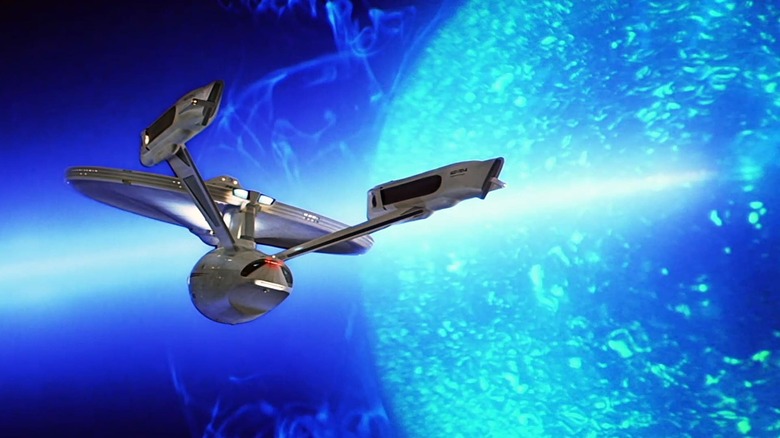
Often cited as the worst of the "Trek" movies, William Shatner's "Star Trek V: The Final Frontier" (1989) starts with a promising concept, but was undone by a bad script hastily written during a strike, and a repeatedly cut FX budget. The film ultimately feels flimsy and ill-considered, not able to truly confront the interesting ideas it brings up. Shatner has apologized for the poor quality of his film, which was fraught with production troubles.
In "Frontier," a newly-built Enterprise is hijacked by Spock's half-brother Sybok (Laurence Luckinbill), who is leading a cult of brainwashed followers, freed from pain by their leader's psychic powers. He seeks a mysterious planet at the center of the galaxy where he believes God physically lives. The final frontier of the title is not space, but the soul, religion, or spirituality. Many "Trek" purists will point out that seeking the center of the galaxy, and finding a deity there, is similar to an Animated Series episode called "The Magicks of Megas-Tu," wherein Kirk found the planet at the center of the galaxy is actually home to Satan.
Note: "The Magicks of Megas-Tu" is far better than "Star Trek V: The Final Frontier."
2293: Star Trek VI: The Undiscovered Country
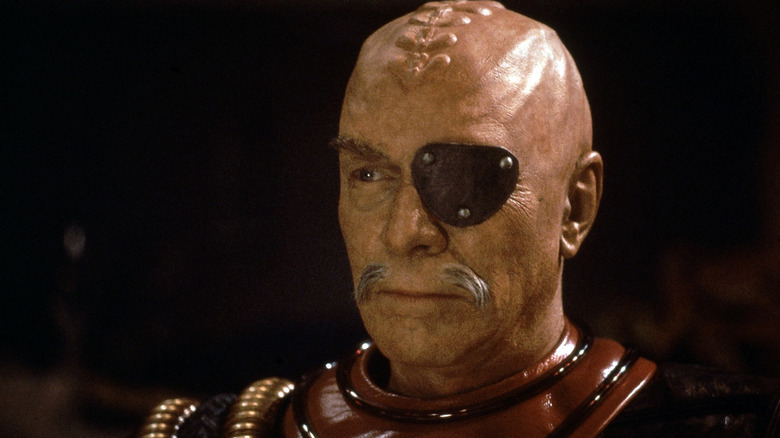
Made after the fall of the Berlin Wall, Nicholas Meyer's "Star Trek VI: The Undiscovered Country" (1991) was very clearly a metaphor for the end of the Cold War. In it, the Klingon Empire is crippled by the accidental explosion of one of their moons, leaving the entire government requiring Federation help. "Country" is about how difficult it is to give up being enemies, especially when so much of one's identity is tied in with hate. There's an assassination, a investigation, a trial, a prison break ... It's one of the best "Trek" movies.
One might glean from the title of the previous film in the series that the entire Kirk era was meant to end with "The Final Frontier." One might also glean that the poor reception and bad box office of "Final Frontier" led to one last go 'round. Fans may be relieved that the final feature film in the Kirk era was actually, y'know, a good one.
2364 - 2370: Star Trek: The Next Generation
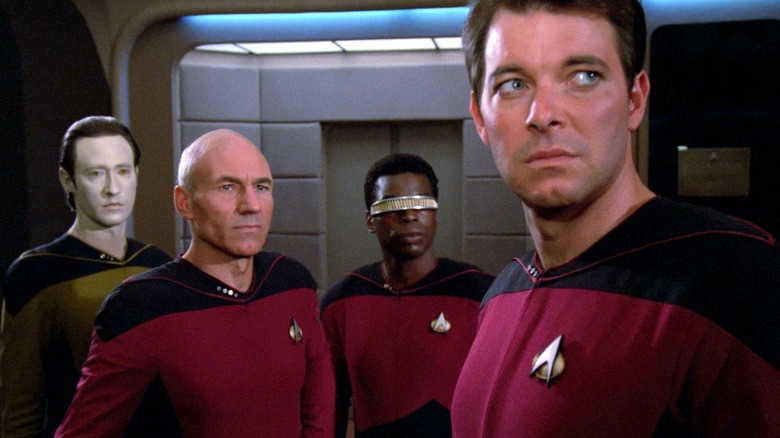
Throughout the 1970s, Gene Roddenberry made tours on the convention circuit, talking about his vision for "Star Trek," and interacting with fans who were inspired by the peace, diplomacy, and calm that "Star Trek" has written into its DNA. Looking back over the 1966 show, notions of optimism and diplomacy are present, but they are mixed in with a lot of violence, sexism, and other now-backward ideas. After Roddenberry was essentially barred from involvement on the "Star Trek" feature films, he decided to make a purer, better version of his old show, set another 80 years in the future, and even more devoted to intelligence and diplomacy than ever before. Hence, 1987's "Star Trek: The Next Generation."
Taking place on a new ship, the Enterprise NCC-1701-D, and featuring an all new cast, the update of "Star Trek" started a little clumsily, but eventually found its stride to become the best "Star Trek" has offered to date. The tech was more convincing than it ever was, and it featured professional, adult characters who deal with crises with stiff upper lips. More so, it more frequently addressed questions about the meaning of life that humanity will always, it seems, wrestle with.
"Next Generation" last for seven full seasons, and its characters ended up occupying just as large a place in the pop consciousness as the characters from the 1966 TV series.
Yes, "Next Generation" went back in time several times.
In terms of chronology, "Next Generation" overlapped with...
2364 - 2370: Star Trek: Deep Space Nine
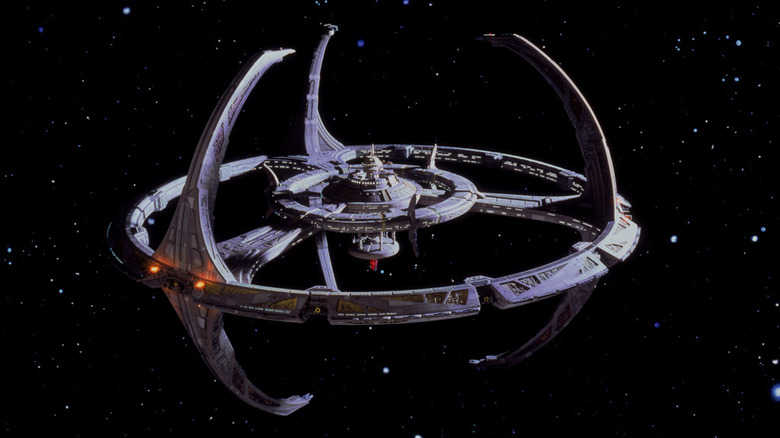
"Deep Space Nine" (1993 - 1999) was an unusual animal in many ways. It was the first time two "Star Trek" shows would run concurrently, and would take place over the same time frame (Picard from "Next Generation" appeared in the show's pilot). It was not about trekking at all, as it took place aboard a space station. It was also not set in the world of the Federation, often revolving alien species who were not offered protection from the organization. It was a show of healing and animosity. Of war and death. It started with an ensemble of seven or eight people, and eventually expanded to include about 30 main characters. "Deep Space Nine" is "Star Trek" via a Russian historical novel.
When taken as a unit, "Next Generation" and "Deep Space Nine," both excellent in their own rights, become a complementary mass that is greater than their sum. The strength of diplomacy vs. its breakdown. The avoidance of war vs. the involvement in it. The absence of fascism vs. its inevitable regrowth.
Yes, "Deep Space Nine" went back in time several times.
"Deep Space Nine's" chronology would overlap with "Star Trek: Voyager," as well as with...
2371: Star Trek: Generations
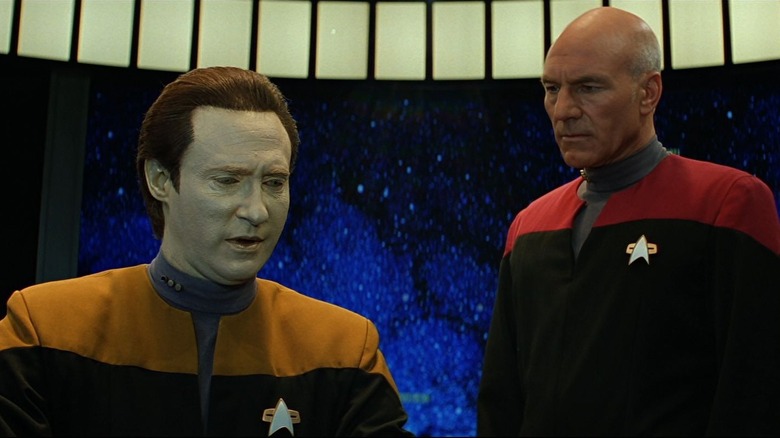
The 1994 feature film "Star Trek: Generations" was a strange excursion. Although "Next Generation" had already run for seven years, "Generations" was still insistent on "passing the torch" from Kirk to Picard, and it bent over backwards to create the means by which Kirk and Picard, separated by 87 years of history, could meet face-to-face. It was the fan crossover no Trekkie wanted. As such, "Generations" is a flimsy affair, speeding through a ridiculous plot about a mobile temporal nexus that serves as Heaven for the people it scoops up along its path.
Trekkies were even-headed enough to realize that Kirk and Picard weren't meant to meet, and that "Next Generation" was its own entity. The decision to aggressively tie the two shows even more closely together was just baffling.
Notable too: The Enterprise-D was destroyed in "Generations," and would be replaced by a big ol' ugly thing for three additional feature films.
2371 - 2378: Star Trek: Voyager
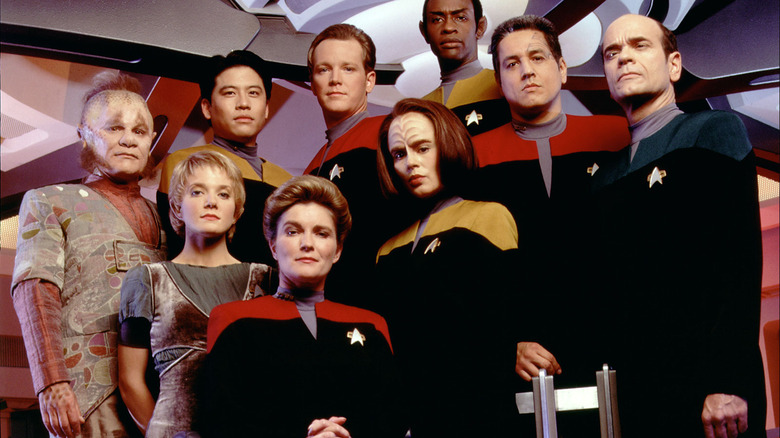
"Star Trek: Voyager" debuted in 1995 and ran concurrently with "Deep Space Nine" both on television and within the chronology of "Star Trek." To cleverly avoid any interference between the two shows, however -- "Deep Space Nine" would eventually become embroiled in a galaxy-spanning war -- "Voyager" was given a "Lost in Space"-style premise wherein the title ship was thrown all the way across the galaxy to a portion of space that has never been explored by Starfleet, and could otherwise only be reached by 70 years of space travel.
While the premise would perhaps lead a viewer to believe that "Voyager" was going to be about resource allocation and survival, it quickly became more about the Borg, a character played by actress Jeri Ryan, and Captain Janeway's (Kate Mulgrew) steady slide into autocracy.
"Voyager" struggled with ratings for years, but still managed to last seven seasons like "Next Gen" and "Deep Space" before it. The final episode of "Voyager," a time travel story called "Endgame," would air in March of 2001.
2375: Star Trek: Insurrection
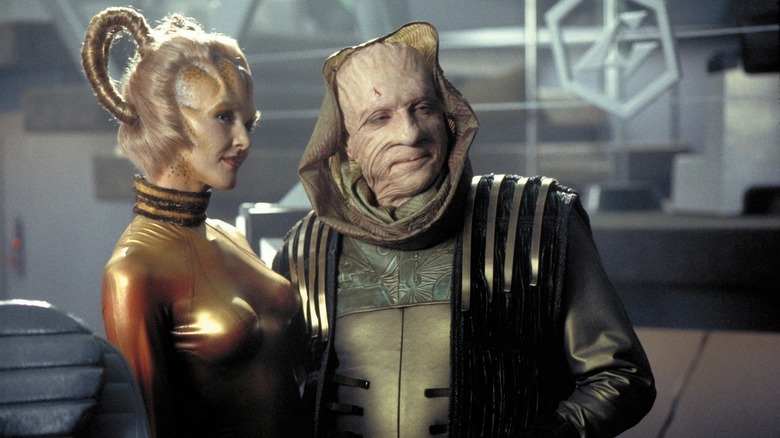
While "Voyager" and "Deep Space Nine" were running concurrently on television, the "Next Generation" crew were yukking it up in the overwhelmingly mediocre 1998 Jonathan Frakes film "Star Trek: Insurrection." Like "The Final Frontier," "Insurrection" can be seen straining against the limits of its budget, with bad CGI, bland costumes, and locations clearly found in the California mountains. The cheapness of "Star Trek" has often served as a boon for its story, forcing writers to insert interesting and challenging ideas into their plywood sets. "Insurrection" has no such ideas, asking the ethical question of forced relocation, but never feeling threatening, and offering a magical curative radiation that would require study and collection.
Although one can admit this: "Insurrection" captures the tone of the "Next Generation" TV series far better than any of the other movies in this part of the series. It's a pity, though, that after the grand finale of "Next Generation," we find ourselves with suck lackluster films.
Speaking of lackluster films ...
2379: Star Trek: Nemesis
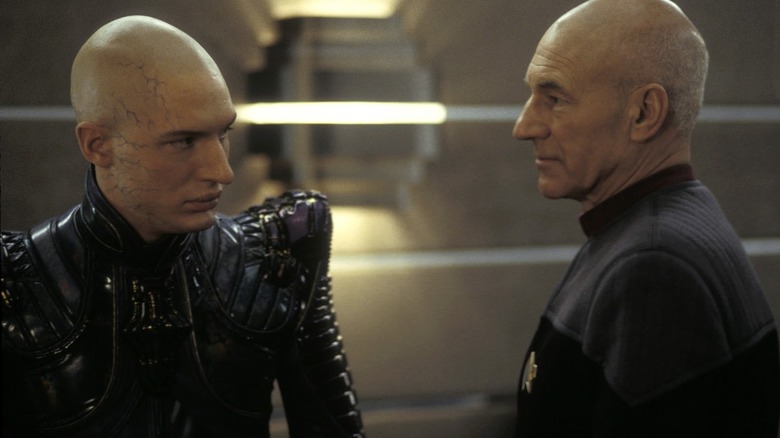
Released in 2002, Stuart Baird's "Star Trek: Nemesis" was poised to be the final gasp for "Star Trek." "Enterprise" was already taking the franchise in a new direction, and the "NextGen" cast was clearly too tired to handle a continued barrage of poorly planned action movies, and thrillers that didn't resemble the show they were inspired by. "Nemesis" is dark and action-packed and violent and takes a lot of structural cues from "Star Trek II: The Wrath of Khan."
In it, Tom Hardy plays a character named Shinzon who is, in fact, a clone of Captain Picard, grown in a Romulan lab, and eventually discarded into a Romulan mine. Shinzon escaped the mine, built an army, and is poised to take a giant death ship into Federation space to revenge all over people. "Nemesis" is also the film in which Data (Brent Spiner) dies, and Captain Picard drives a dune buggy.
The sentiment of the time was reminiscent of T.S. Eliot's "The Hollow Men." This is the way "Next Gen" ends. Not with a bang, but a whimper.
Worry not. There will be further whimpers for the NextGen crew.
2380 - ?: Star Trek: Lower Decks
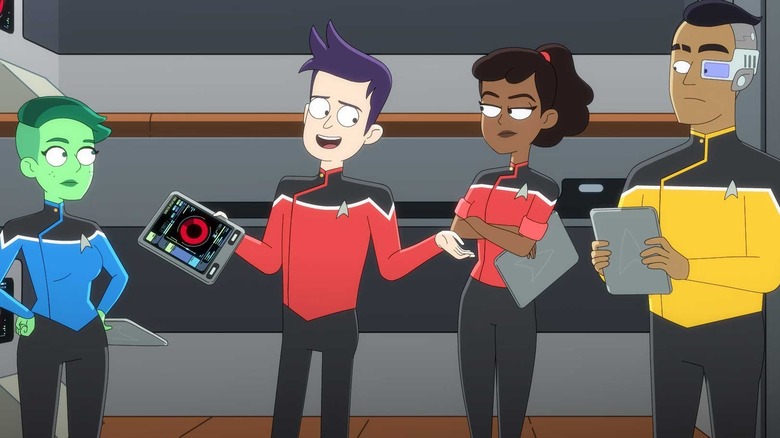
Named after a seventh season episode of "Next Generation," and taking place in line with the end of "Nemesis" and "Voyager," "Star Trek: Lower Decks" debuted on Paramount+ in 2020 as part of a slew of "Star Trek"-related indicia that the company was desperate to exploit. And while the all-your-eggs-in-one basket approach to TV production affected by Paramount led to stinkers like "Discovery" and "Picard," it did lead to this surprisingly good animated program.
One of the more appealing aspects of "Star Trek" is that it's essentially a series of workplace shows. The characters are typically vocation-forward, and take their duty to their ship very seriously. Where a "Star Trek" character works speaks powerfully to who they are. "Lower Decks" follows the people who have the worst possible jobs on a Starfleet vessel, often tasked with cleaning holodecks, sanitizing floors, and arranging widgets for the senior staff. It's rough going for ensigns. They sleep in the hallway and are typically not deemed important enough to include on more exciting missions. What's more, the central ship on "Lower Decks" is a tiny, crappy ship with substandard tech. Surely such jobs would exist in "Star Trek."
"Lower Decks" is eager to make "Trek" references, and is clearly made by people who understand "Trek's" ethos, but who still have a raunchy sense of humor. The future is here. And it's still crappy for those on the bottom.
2383: Star Trek: Prodigy
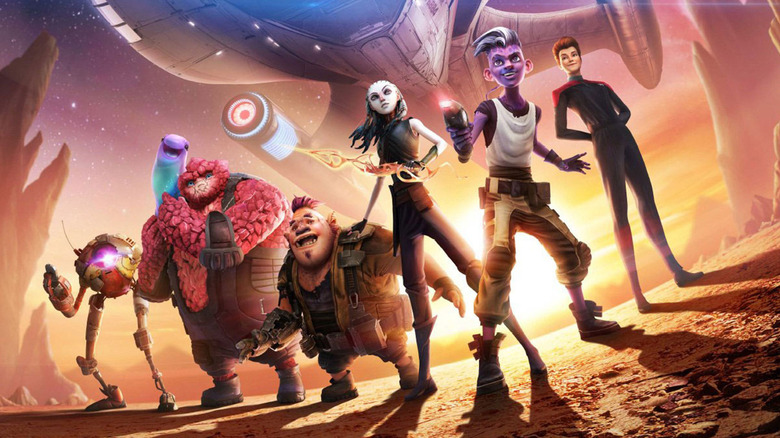
Produced under the auspices of Nickelodeon, "Star Trek: Prodigy" (2021) was the first Trek series to be made explicitly with a younger audience in mind. The series follows a ragtag group of alien youths as they flee a prison mine and discover an abandoned Starfleet vessel called the U.S.S. Protostar. On board is an instructional hologram of Captain Janeway from "Voyager," and she teaches the kids how to behave like Starfleet officers, the importance of duty and compassion, and how their trauma does not define them. The design and the creatures are more reminiscent of "Star Wars" than "Star Trek" (the series features an evil emperor and his powerful masked servant, invoking the Emperor and Darth Vader), but it certainly functions as a generic space adventure. The "Star Trek" stuff is mere window dressing.
It's almost disappointing to include "Prodigy" on this timeline, as one of the show's central mysteries -- at least for the first part of its first season, the only part to have aired as of this writing -- is when and where it takes place. It was possible that "Prodigy" took place centuries or even millennia beyond the known Trek universe. The last we saw, however, the real Captain Janeway is still alive, giving "Prodigy" a known place in Trek chronology.
2399: Star Trek: Picard (Season 1)
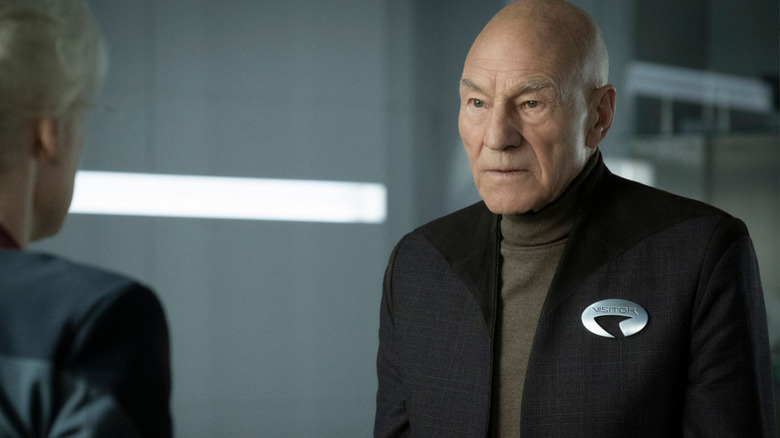
After nearly 20 years of a world without Picard, Paramount+ convinced Patrick Stewart to reprise his role in a new show named for him. "Star Trek: Picard" debuted on Paramount+ in 2020, taking place further in the future than any other Trek show to date. In the timeline of "Picard," the Federation had become soured by xenophobia and openly discouraged the evacuation of Romulus, historically an enemy world, but now in dire straits after their sun went supernova (something something J.J. Abrams). Picard had left Starfleet in disgust, and had now retired to his winery.
The story of the first season is too convoluted to get into here, needless to say it involved a Romulan secret society, a planet of androids, a reclaimed Borg cube, and a robot Cthulhu. I'm not kidding.
It's a pity that "Picard" did not roll with its future setting more, establishing new tech or positive sea changes in the "Trek" universe. Instead, everything is devoted to a chewy, awful story about androids. Indeed, by the end, Picard himself would have his consciousness shunted into an android body. What a snore.
3188 - 3190: Star Trek: Discovery (Seasons 3 And 4)
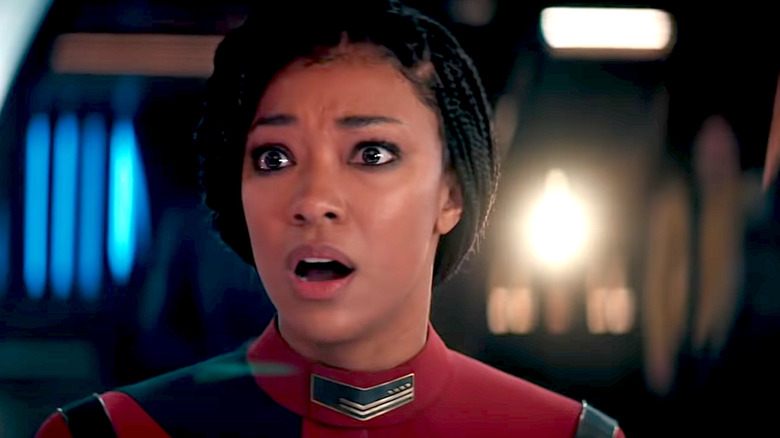
When last we saw the U.S.S. Discovery, it was being pulled through a time hole into the distant future. In the third and fourth seasons, Discovery's crew learns that they are stranded 930 years from home, and now must rediscover their function as Starfleet officers after the Federation went into hiding. A galaxy-wide disaster -- The Burn -- spontaneously destroyed millions of starships, and a fierce new criminal enterprise, The Emerald Syndicate, now rules the galaxy.
The 23rd-century ship now has to learn how to use 32nd-century technology. The Discovery was redesigned, and the new mission became to spread diplomacy in a galaxy unready for it. This is the premise, it seems, that Discovery should have started with two years prior. The writing is still rather weak, and the characters are callow and weepy, but "Discovery" does excel in one notable way: Queer representation. Seven of the main cast members are openly queer. After 55 years of a dodgy relationship with queerness, "Discovery" finally nailed it.
I just wish it were a better show.
Read this next: Single-Season '80s Sci-Fi And Fantasy Shows That Deserve A Second Shot
The post Every Star Trek Show and Movie in Chronological Order appeared first on /Film.
Did you find this article useful? Save THIS PIN to your board and check it later at any time!
